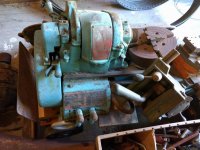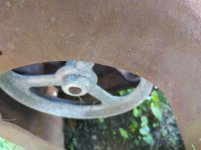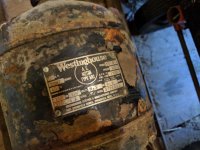critical_thinker
Plastic
- Joined
- Aug 8, 2018
Good evening folks,
Is there an existing thread/post in which members discuss how to estimate what it would take in cost/time to restore a Model 9A (or similar)? And if the effort is even worth it in terms of the sort of results I should expect?
Old friend of mine's late father owned a beautiful 9A. It was well maintained right up until he passed. I had thought they threw it out or sold it. I recently learned that for some reason they had taken it out of the workshop, partially disassembled it and stored it in an exposed space on a concrete pad under a deck. There it sat for several years.
Such a shame, but it's water under the bridge. I'd love some insight from anyone who has brought a South Bend back from the dead.
If I were to go through the effort of restoring it, I'd keep it. But I'm curious how much of it would likely be salvageable given the materials used in its construction. And any other things I should consider before making the leap?
Here are a handful of photos. I have many more.
Thanks in advance.





Is there an existing thread/post in which members discuss how to estimate what it would take in cost/time to restore a Model 9A (or similar)? And if the effort is even worth it in terms of the sort of results I should expect?
Old friend of mine's late father owned a beautiful 9A. It was well maintained right up until he passed. I had thought they threw it out or sold it. I recently learned that for some reason they had taken it out of the workshop, partially disassembled it and stored it in an exposed space on a concrete pad under a deck. There it sat for several years.
Such a shame, but it's water under the bridge. I'd love some insight from anyone who has brought a South Bend back from the dead.
If I were to go through the effort of restoring it, I'd keep it. But I'm curious how much of it would likely be salvageable given the materials used in its construction. And any other things I should consider before making the leap?
Here are a handful of photos. I have many more.
Thanks in advance.












